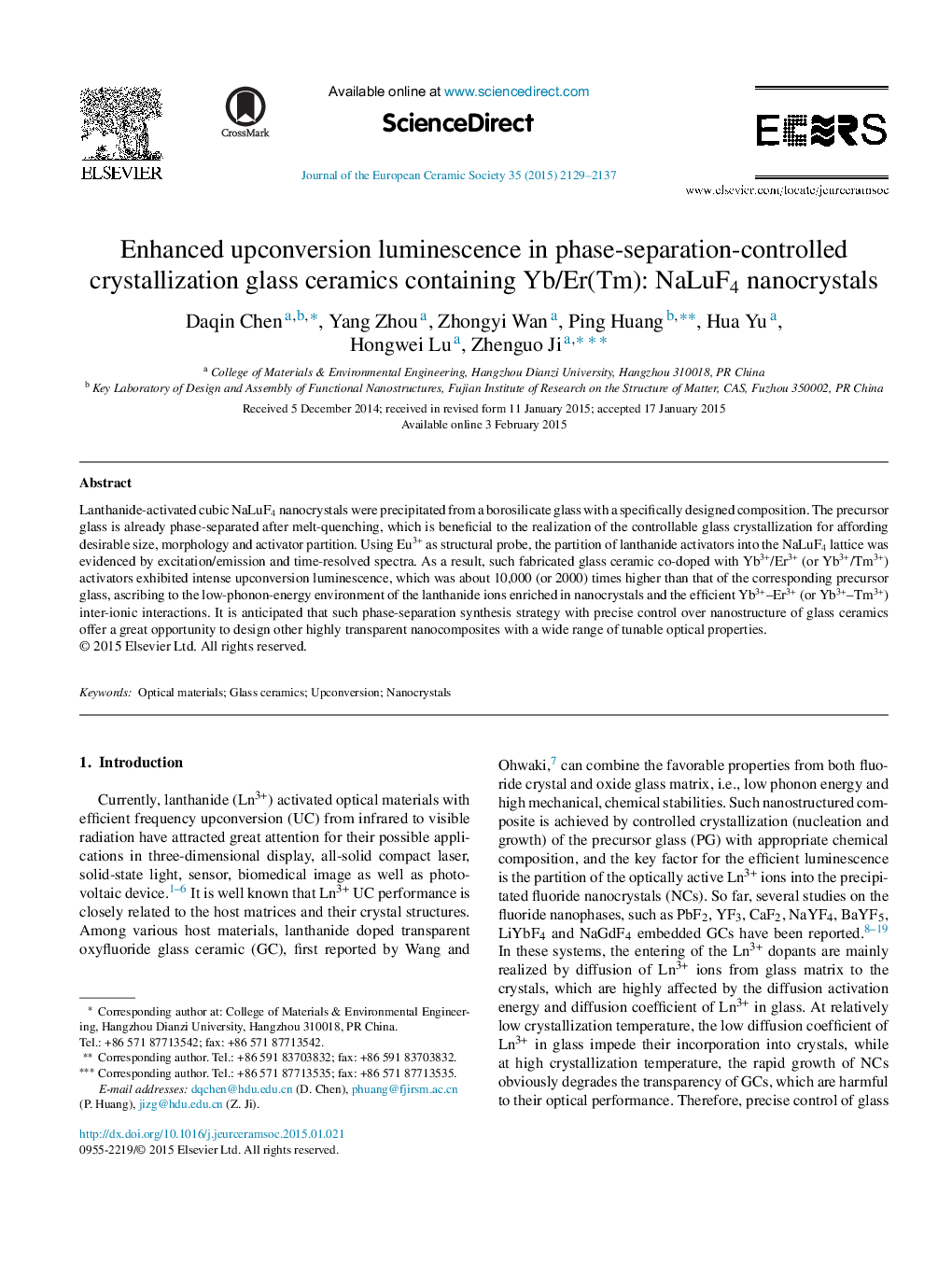| Article ID | Journal | Published Year | Pages | File Type |
|---|---|---|---|---|
| 1474084 | Journal of the European Ceramic Society | 2015 | 9 Pages |
Lanthanide-activated cubic NaLuF4 nanocrystals were precipitated from a borosilicate glass with a specifically designed composition. The precursor glass is already phase-separated after melt-quenching, which is beneficial to the realization of the controllable glass crystallization for affording desirable size, morphology and activator partition. Using Eu3+ as structural probe, the partition of lanthanide activators into the NaLuF4 lattice was evidenced by excitation/emission and time-resolved spectra. As a result, such fabricated glass ceramic co-doped with Yb3+/Er3+ (or Yb3+/Tm3+) activators exhibited intense upconversion luminescence, which was about 10,000 (or 2000) times higher than that of the corresponding precursor glass, ascribing to the low-phonon-energy environment of the lanthanide ions enriched in nanocrystals and the efficient Yb3+–Er3+ (or Yb3+–Tm3+) inter-ionic interactions. It is anticipated that such phase-separation synthesis strategy with precise control over nanostructure of glass ceramics offer a great opportunity to design other highly transparent nanocomposites with a wide range of tunable optical properties.
